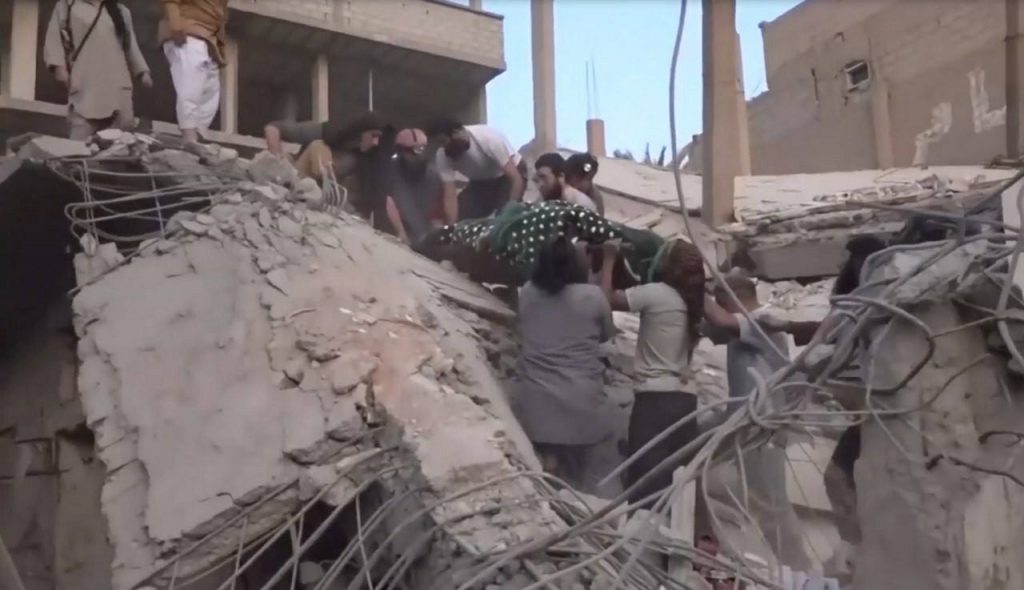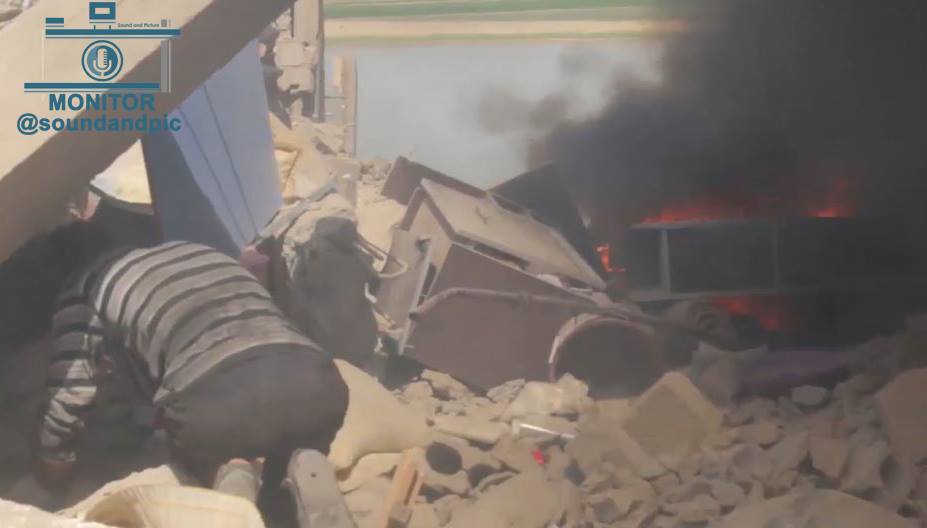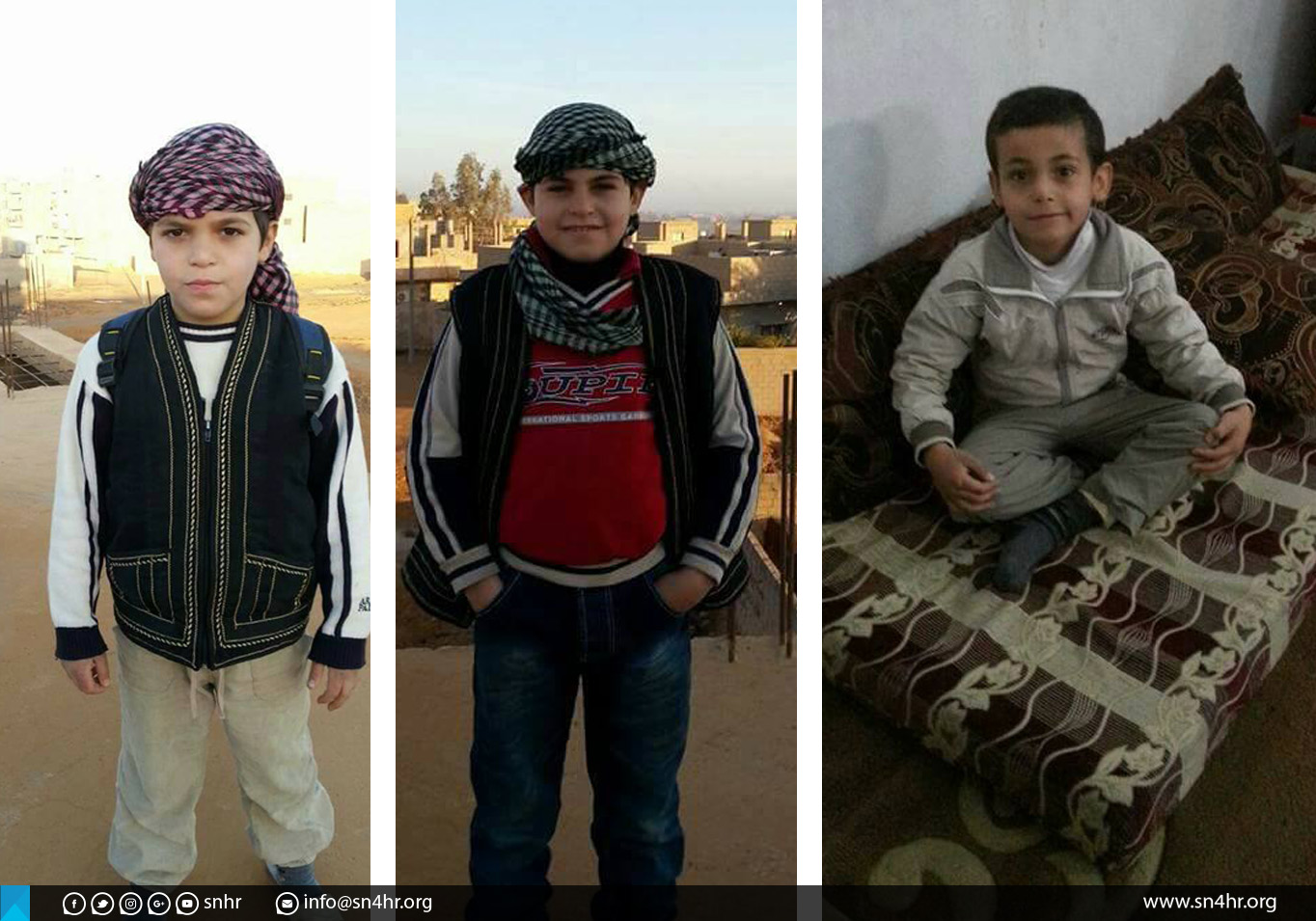In the race to capture ISIS territory, hundreds of civilians have been reported killed by airstrikes in Deir Ezzor governorate in the past two weeks. Russia, the regime and Coalition are all active in

A race to capture the key eastern city of Deir Ezzor along with ISIS-held Syrian territory along the border with Iraq has led to a sharp escalation of deadly airstrikes in the area which are being blamed locally on Russia, the regime and the Coalition – and allegedly leaving hundreds of civilian casualties between them.
Airwars researchers have monitored a major uptick in allegations since mid September in Deir Ezzor governorate. Local Syrian monitors are reporting the same trend: the Syrian Observatory for Human Rights has indicated that 191 civilians were killed by Russian and/or regime raids in Deir Ezzor between September 10th and 18th. Though Airwars has not fully vetted Russian strikes during this period, such a toll would be higher than all the allegations against Moscow in Syria which Airwars tracked during August.
“The Russian bombing campaign was relatively quiet until September 10th, when we saw a marked intensification of raids on Deir Ezzor province. Then in just over a week more than 200 civilians were reported to have been killed,” said Kinda Haddad, chief Syria researcher at Airwars. In many of those incidents, she noted, conflicting attribution has made assessments difficult.
In other cases, the evidence points more directly to Russia. On September 10th, numerous sources reported that several dozen civilians were killed when Russian aircraft bombed the al Hawayj river crossing, hit boats and areas where they were launched from. A report in Smart News said that “most of the bodies are still floating on the surface of the Euphrates River.” Some outlets blamed the regime, though cockpit video released days later suggested the attack was likely Russian.
Unusually, the US-led Coalition has proactively been making clear that its forces are not responsibile for many of the claimed incidents. A senior official told Airwars on September 15th, for example, that the Coalition was not conducting any strikes within Deir Ezzor city – the location for many reported strikes.

Destruction in Al Mayadin following a strike on Sept 10th (via Sound and Picture). Sources variably blamed the Coalition, Russia and the Syrian regime — reflecting the state of confusion on the ground.
Divided battlefield
The battlefields of eastern Syria remain chaotic, though are at present effectively split by the Euphrates River, which in that part of the country runs diagonally southeast through Raqqa to Deir Ezzor, and on to oil-rich areas near the border with Iraq.
On September 9th, the Coalition announced the start of “Operation Jazeera Storm,” supporting Syrian Democratic Forces fighting ISIS in the Khabur River Valley. The Khabur river runs south and meets the Euphrates between Deir Ezzor and Mayadin. Contingents from the SDF, which has also captured much of Raqqa from ISIS, are now moving to areas just north of Deir Ezzor city.
At the same time, regime troops backed by Russian airstrikes and Special Forces have moved quickly from the south and east, entering the outskirts of Deir Ezzor city earlier this month and linking with besieged government troops at a garrison there. On both sides of the river, ISIS has lost swaths of territory to the advancing forces.
There remains a risk of conflict between the assaulting forces. On September 16th, the Coalition accused Russian warplanes of bombing SDF positions on the eastern side of the Euphrates, injuring several. Coalition soldiers – likely American – who were nearby according to a press statement. On September 21st, after what it said was SDF shelling of regime positions, the Russian military warned the Pentagon that “any attempts to open fire from areas where SDF fighters are located would be quickly shut down.”
Though significant media attention has been paid to the potential for clashes between Coalition- and Russian-backed forces, there has been little focus on those civilians – many of them already displaced from elsewhere in Syria – who are dying despite ongoing “deconfliction” efforts involving Coalition and Russian officials. Should those measures break down, civilians may be at further risk.
Deconfliction line
Speaking from Baghdad, Coalition spokesman Colonel Ryan Dillon told Airwars that a deconfliction line between the SDF and regime-Russian forces – tentatively drawn a few miles off the right bank of the Euphrates – had run from Tabqa (a city west of Raqqa) to Deir Ezzor. However areas beyond that in the Euphrates Valley such as Mayadin and Abu Kamal – locations believed to harbour senior ISIS leaders – are in territory with unclear deconfliction status, the colonel suggested. Coalition officials expect the fighting in the Valley to be fierce – whichever foe ISIS faces.
Adding to the volatile situation, Iraqi government air raids have recently been documented just inside Syrian territory, as well as in adjacent Iraqi territory still controlled by ISIS.
Col. Dillon said that the Coalition had bombed inside Deir Ezzor city only until regime forces had reached their garrison on September 5th. Coalition aircraft continue to strike areas northwest of the Euphrates in support of the SDF, along with targets towards the Iraqi border. For instance, published Coalition strike reports indicate that aircraft bombed “near Abu Kamal” on nine of the first 20 days of September.
The Russian military has recently been documented bombing on both sides of the Euphrates. On September 18th, Moscow announced that regime forces had crossed the river south of Deir Ezzor city – potentially jeopardising the line of deconfliction that Col. Dillon described. The move was also the culmination of a particularly deadly period for civilians in Deir Ezzor governorate.
“The [Russian and regime] move significantly discredits the argument that the Euphrates can serve as a viable deconfliction line while IS implodes,” assessed Andrew Tabler, a fellow at the Washington Institute, in a recent report.
https://twitter.com/todayinsyria/status/909715823367000064
UN ‘deeply concerned’
With reports of high casualties, the UN has issued an urgent call for the protection of civilians in eastern Deir Ezzor, saying it is “deeply concerned.”
On September 10th for example, an airstrike hit a border crossing in Elbuleil, with the UN noting the event as “reportedly killing and injuring tens of civilians.”
On September 14th, Airwars monitored 11 separate alleged civilian casualty events from airstrikes in Deir Ezzor governorate — all of which are currently evaluated as contested by researchers. The worst may have taken place in an area on the eastern side of the Euphrates — possibly a camp for internally displaced people. Some reports suggested a death toll upwards of 100. ISIS-affiliated accounts posted horrific video footage, showing dead and wounded children, and initially blamed the Coalition. A number of subsequent reports claimed Russia was responsible, while at least one called into question whether the incident took place at the camp.

The camp near the village of Jadid Akeidat (via Al Yaqeen news agency)
“Reports for the majority of these allegations were highly confused, with sources reporting them as being perpetrated by the coalition, others saying it was Russia and others still reporting them as regime strikes,” said Kinda Haddad. “Some of the villages mentioned were later reported to have fallen into regime hands, so it is reasonable to assume that those particular ones were either regime or Russian strikes.”
“The UN is deeply concerned for the safety and protection of civilians – men, women and children – who are the victims of continued fighting, airstrikes and military operations in Deir-ez-Zor,” said Ramesh Rajasingham, the acting interim Regional Humanitarian Coordinator for Syria in a statement. “I call on all parties to do their utmost to ensure the safety and well being of civilians in the conduct of military operations and strictly adhere to the international humanitarian law principles of distinction, proportionality, and precautions in and from the effects of attack.”
Not all incidents appear to be the responsibility of Russia or the regime. Airwars currently assesses an event in Abu Kamal on September 17th-18th as having likely been perpetrated by the Coalition. At least seven named civilians were killed from the same family, including four children.
Despite the continuing high toll at Raqqa and escalating casualties around Deir Ezzor, once again no Pentagon reporters asked questions about civilian casualties – in either Iraq or Syria – at the Coalition’s weekly press briefing on September 21st.

‘The children Samir, Amir, and Munir Badr Attallah al Haj Kardoush, killed with their parents in International Coalition warplanes missiles fired on al Sena’a neighborhood in al Boukamal city in Deir Ez-Zour governorate eastern suburbs, September 17, 2017.’ via SN4HR